Solar power has been making an appearance in more and more mobile phone accessories over the last year or so. Initially only available as stand alone Solar Powered Chargers, the technology has now found it’s way into mobile phone cases, Bluetooth Headsets and Bluetooth Car Kits.
Of all of the accessories available, Bluetooth Car Kits are the most logical accessory to make use of solar power – after all, they do spend most of their time either on your dashboard or sun visor.
Until recently there were only a couple of Solar Powered Bluetooth car kits available – the LG HFB-500 and the Drive Solar Pro. The latest car kit to join the range is the Clip & Talk Solar Edition. The Clip and Talk range has always been incredibly popular and offered great value for money, so I thought I’d put the latest addition to the Clip and Talk family to the test to see how it performs.
Clip & Talk Solar Edition:
The first thing that you notice with the Solar Edition is that it’s tiny – it’s almost half the size of the standard Clip & Talk Car Kit. The front of the kit houses the 2 watt speaker, answer/end button and the volume controls. The back of it is the solar panel for charging the device. On the left side of the kit is the mute button, and on the other side is the micro USB charging port.
Most plug and play car kits are designed to be mounted on your sunvisor, but as the solar edition needs sunlight in order to charge, it comes with a suction holder to mount it to your windscreen. Also included with the kit is a USB Charging cable, Car charger adapter and 2 spare suction pads.

- Clip and Talk Solar Edition Box contents
Setting the car kit up was really simple, just slide it into the suction hold and stick it to your windscreen. Job done. I decided to charge mine initially using the USB charger, this took about an hour and a half. Once it was charged, I was ready to go and I probably wouldn’t need the car charger again as the kit charges all the time that it’s in sunlight.
Pairing the Kit:
Before I could start using the kit I had to pair it to my phone. To do this I had to put the kit into pairing mode by turning the kit off and then pressing and holding the answer button for about 10 seconds until the lights flashed red and blue. To pair my phone all I had to do then was perform a quick search for nearby Bluetooth devices. Once I’d selected the Solar Kit I was pleasantly surprised to find that I didn’t need to enter a PIN/Passkey as my phone simply asked if I wanted to pair with the Kit. This seems to be phone dependent as some phones I tried this with were still prompted for a PIN/Passkey.
As the kit is a multipoint car kit (read our guide on “What is Multipoint?”) I wanted to test it out with two phones and in order to do this I needed to pair it to another phone. Putting the kit back into pairing mode is pretty simple, I just had to repeat the steps mentioned earlier.
Multipoint:
When a call comes through to either of the handsets, the kit should automatically connect to the phone that’s ringing and route it through the speaker.
When I first tried to make a call to one of the two connected phones (an iPhone and a Nokia 6300), I was surprised to find that the phone I was calling didn’t connect to the kit – a quick flick through the user manual soon offered a way to fix this – by default multipoint support is turned off.
I’m not really sure why Clip & Talk decided to disable it by default, but I needed to turn it on before I could use two phones with the kit. To turn it on just press and hold the + button for about 3 seconds. Once that’s done the Clip and Talk Solar kit automatically connects with the last two phones that it connected to, providing that the phones are in range.
Once I’d enabled Multipoint I found that the kit worked perfectly every time. If you need to use two phones in the car this saves a lot of messing around and once you’ve got used to it you’ll never want to go back to a non multipoint car kit.
Multipoint also worked brilliantly for outgoing calls, it didn’t matter which handset I made a call from, as soon as the kit detected a call was in progess, the audio was routed through the loud speaker.
Audio Quality:
The Clip & Talk Solar edition has a 2 watt speaker, which on paper doesn’t sound very much, but it’s plenty powerful for use in the car. I was able to hear callers with no problem at all while driving around town and on dual carriageways at speeds of up to 50mph. On motorways there is obviously more road and wind noise which makes hearing anything more difficult, having said that I was still able to hear the caller (with volume on full) at 70mph on the M6.
One thing I did notice during my road test was that it didn’t cut out – some Bluetooth devices that I’ve used in the past sometimes cut out for a fraction of a second, usually at a crucial point in a conversation, causing you to miss a punchline, phone number or other important information. I made a number of calls from both the iPhone and the 6300 as well as receiving calls on both, and didn’t experience any drop outs.
Ease of Use:
There’s nothing I hate more than a gadget with far more buttons than it needs, so when I saw that there are only 4 buttons on the Clip & Talk Solar Edition I was pleasantly surprised – having said that, most buttons have more than one function, so you’ll probably want to keep the user guide close to hand in case you forget which button does what.
On the front of the kit is the Answer/End button, volume up and volume down. The only other button is the mute button located on the left hand side.
The answer/end key has several functions – it’s used to turn the device on and off, put the kit into pairing mode, activate voice dialling and redial the last number called.
Using the kit to activate last number redial or voice dialling is pretty straight forward – especially if you’re only using one phone with it, but if like me you’re using two handsets there is a little bit more to it.
The kit won’t know which phone you want to make the call from if you just had one button for activating these features, so to make it a little clearer, one press of the answer/end key will activate voice dial and two presses will dial the last number called for the first handset connected to the kit. Similarly one press of the volume up button activates voice dialling and two presses will dial the last number called for the second handset connected. This of course makes it a lot easier to make sure you’re dialling the right number on the right phone – as long as you know which handset connected first. To be honest though, this didn’t cause me any problems as they’re not features that I really use in the car as I’ve never found voice dialling to be that accurate.
Summary:
I’m extremely impressed and a little bit surprised by this kit to be honest. Considering it’s price I wasn’t really expecting great things, but given that it’s multipoint, it doesn’t need charging and it’s compact size I would happily choose this kit over the more expensive Nokia HF-310 and Parrot MiniKit Slim Bluetooth Car Kits.
There are Bluetooth Car Kits (such as the standard Clip & Talk Bluetooth Car Kit) that have a few more features such as Phonebook sync, Text to Speech, caller display and FM transmitters, but you’ll pay around twice as much for them, so if you want a Plug and Play Bluetooth Car Kit that’s simple to use, works with two phones at the same time and doesn’t cost the earth – literally – then you can’t go wrong with the Clip & Talk Bluetooth Car Kit Solar Edition.
My rating: 9/10
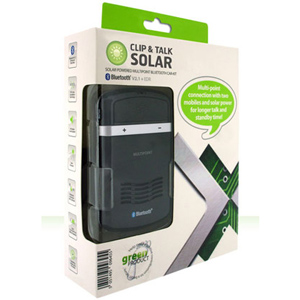
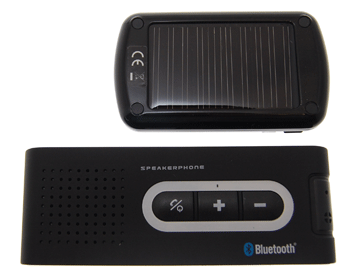
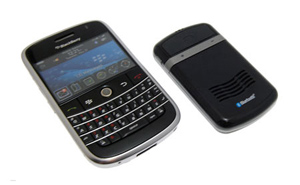
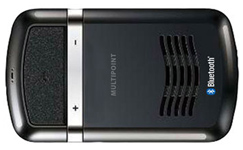
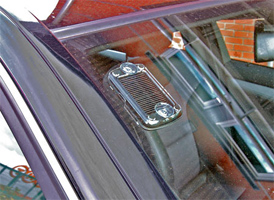
One thought on “Clip and Talk Solar Edition Review”
Comments are closed.